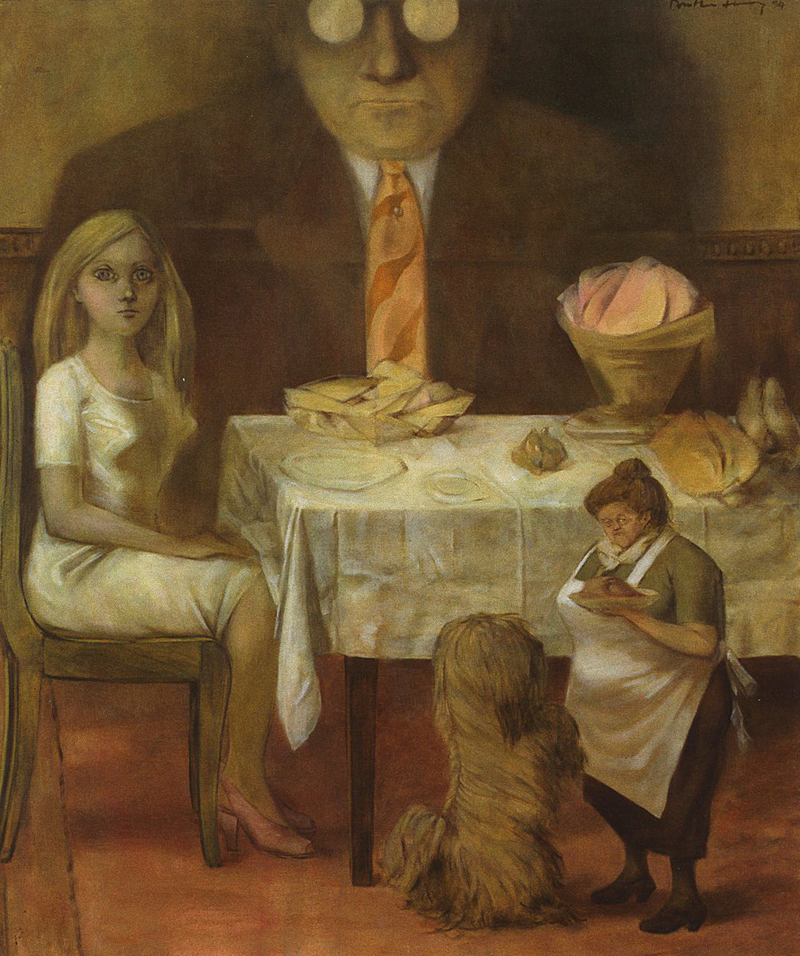Who’s trying harder to appeal (or pander?) to women—Obama, Romney, or SAM? Women are crucial at the ballot box this year, but at SAM and the rest of the world’s museums, they’ve always been an underrepresented group. The worthwhile big survey show Elles: Women Artists From the Centre Pompidou, Paris, augmented by SAM’s own collection and a few loans, covers a recent century of art. The notion that before 1909 women painted, sketched, did needlework, or maybe even carved idols in Paleolithic times is beyond the exhibit’s parameters. What about embroidery, fashion, or other aspects of “the domestic arts” to which women were historically confined? Well, 1909 is where the Pompidou begins (it’s a modern-art collection), and so that is where Elles must begin.
The circulation pattern and individual galleries are essentially historical as you wander through some 130 pieces by 75 women (not all of them French, of course). You start with the contemporaries of Picasso—figures like Sonia Delaunay and Suzanne Valadon, who first broke into Paris salons and galleries. From there, perhaps unavoidably, it’s like leafing through an art-history text. Here comes Surrealism, the Bauhaus movement, Dada, the Constructivists, a bit of realist photography from the WPA era, the Abstract Expressionism of the postwar years, then finally the women’s lib of the ’60s and beyond.
My bias is always toward the modern, and everything at Elles seems more interesting as you move from “in the style of” to “in our own style and voice.” There is a growing autonomy of imagination and subject. It’s not until you get to early-modern painters like Frida Kahlo and Georgia O’Keeffe that the path begins to veer from prior male footprints. (Note: I’m treating the Pompidou and SAM sections, presented on different floors, as one.) With Kahlo, represented by only one small self-portrait, there’s the declaration that her life and biography are inherently worthy of artistic treatment. With O’Keeffe’s skulls and flowers, flanked by the photos of UW-trained Imogen Cunningham, interiority and the organic become essential topics. Their art seems fundamentally different from that of their male contemporaries in the way that, say, Helen Frankenthaler’s does not. Much as I love Margaret Bourke-White, she’s just another photojournalist competing with the guys in to get published in LIFE.
Things improve further with the arrival of the dreaded F-word, feminism. The Henry hosted an important Carolee Schneemann retrospective last fall, and her carnivalesque Meat Joy video is just as weirdly, wonderfully pagan/transgressive as before. Following her are Cindy Sherman (whose current big MoMA show will eventually travel here, we hope), Jenny Holzer, the Guerrilla Girls, Barbara Kruger, and others who directly address gender politics—how women are depicted not only outside the museum, but inside the art world, too (see Andrea Fraser’s deadpan parody video of a museum docent’s lecture).
Still, the lurking danger here is tokenism, an objection I made to Tacoma Art Museum’s all- gay “Hide/Seek” show this spring. (Germaine Greer likewise called the Pompidou’s original 2009 Elles show a “sampler,” and argued against a separate, reductive category of women’s art.) Again, you want to see more from each individual artist: more than one Kahlo, more than two Shermans, etc.
But it gets boring to make the same argument, so I was delighted to find an entire gallery devoted to 83-year-old Yayoi Kusama (her first appearance at SAM). I’d read a lot about the woman, but was unprepared for the fecund power of her swirling, spotted, obsessive patterns, the intense dots and clusters of color, the yellow seeds scattered across the orange firmament of I Want to Live Forever. Yellow tentacles erupt from the floor, fibrous tumors grow on mundane objects, a lifeboat is made of silver-painted work gloves. (Some of her spirit-of-the-’60s videos are also screened in a separate gallery.) Hers is germinal art—spores, spots, and sprouts—as if spilled from a Petri dish and left to grow in a laboratory clean room.
And here’s a local root: After corresponding with Kenneth Callahan, Kusama moved from Japan to Seattle for a year in 1957. Before her famous decade in Manhattan, she had her first solo show at our pioneering Zoë Dusanne Gallery (later razed to make way for I-5). For me, 55 years later, she’s first among Elles, finally earning a room of her own.








